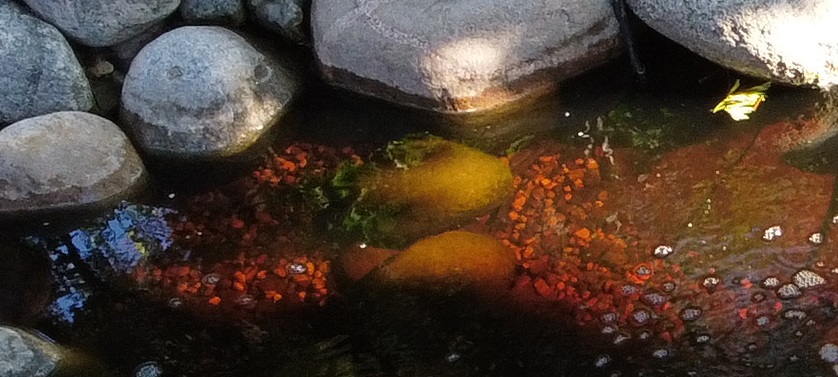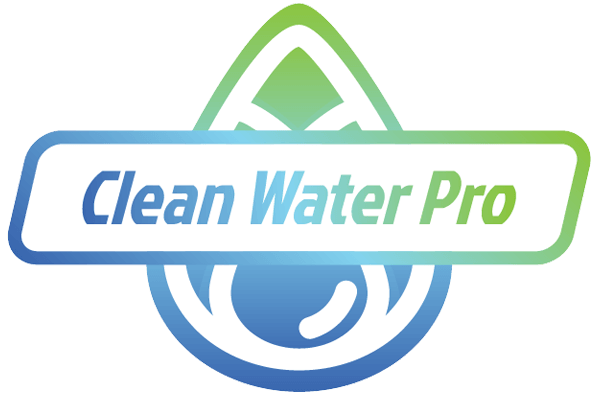What Are Tannins?
Have you ever come across pond water with a distinct tea-like colour?
This visual effect, often seen in ponds with a significant amount of organic debris, such as fallen leaves or plant matter, is likely due to tannins. Tannins are organic compounds predominantly found in various plant tissues, including leaves, bark, and wood. They belong to a larger group of compounds known as polyphenols.

When tannins dissolve in water, they can impart a distinct brownish hue. This process is similar to making tea, hence the term “tea-staining.” Despite the dramatic appearance, it’s important to note that tannins are not harmful to aquatic life or humans. However, they can affect the aesthetic quality of water bodies, turning them into an unappealing brown or tea colour.
Dealing with Sediments in Pond Water
Sediments, which can accumulate in ponds from various sources, including soil erosion and the decay of organic materials, pose another challenge. These fine particles can settle at the bottom or remain suspended in water, making them murky and less visually appealing. Managing sediments is crucial for maintaining clear and healthy pond water.
Combating Brown Algae and Phosphates
Brown algae is another common issue affecting pond water, especially in nutrient-rich environments with limited light penetration. This type of algae, which can appear as a brownish film or layer, often develops in fresh and saltwater systems and can be challenging to control once established. Addressing nutrient levels, particularly phosphates, is critical to managing brown algae.
To effectively reduce phosphates, a primary nutrient source for algae, using a phosphate binder like CWP Phosphate Binder is recommended. This product binds the phosphate nutrients, making them unavailable to algae, thereby preventing excessive algae growth.
Tackling Tannin Discoloration, Sediments, Brown Algae, and Phosphates
For pond owners, the presence of tannins, sediments, brown algae, and phosphates can be a concern, primarily due to their impact on the clarity and appearance of pond water. Fortunately, there are effective ways to manage and reduce these issues:

- Beneficial Bacteria: Introducing beneficial bacteria into the pond can help clear the water column. These bacteria break down organic matter that contributes to tannin levels, sediment formation, and nutrient loads that feed algae.
- Flocculants: In some cases, flocculants such as Rapi Clear or InstaClear may be necessary. These products help to clump and remove particles from the water, including tannins, sediments, and algae, thereby clearing the discoloration.
- Pond Cleaner PLUS: Another excellent solution is Pond Cleaner PLUS. This product is conveniently packaged in water-soluble packets and works to clear the water, reduce nutrients, and control algae, duckweed, and other aquatic weeds. It also helps in organic sediment management by consuming loose particles. It’s easy to use—toss a packet into your pond according to the size guidelines
- Fine Bubble Aeration: Installing a fine-bubble aeration system can significantly improve water quality by increasing oxygen levels and enhancing circulation. Water aeration breaks down unwanted nutrients and supports the natural processes that clear tannins and sediments and prevent algae growth.
Conclusion
While naturally occurring and generally harmless, tannins, sediments, brown algae, and phosphates can diminish your pond’s visual appeal. By understanding what these elements are and how they affect water quality, you can take informed steps to manage them.
Whether through beneficial bacteria, flocculants, phosphate binders, Pond Cleaner PLUS, or fine bubble aeration, maintaining the beauty and health of your pond is manageable.
Remember, the health of your pond reflects the care you put into it.
If you appreciate the service and products that help keep your water clean, consider leaving a review to support and share your experience with others. Clean Water Pro is always here to assist, ensuring you have the cleanest and most beautiful pond possible.
